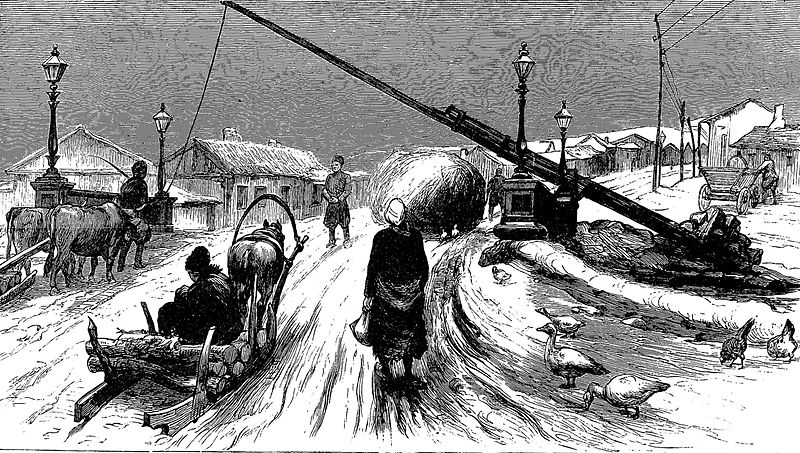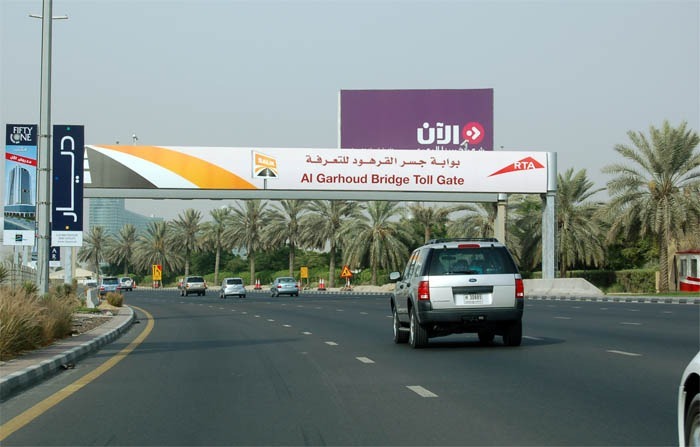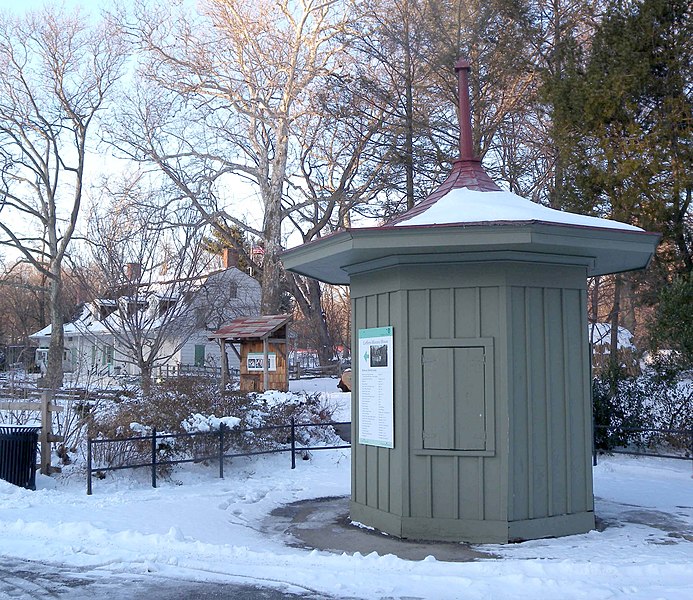A toll road, sometimes known as a turnpike or tollway, is a public or private road that charges a fee (or toll) for use. In modern times, toll roads are nearly invariably controlled-access highways. It is a type of road pricing that is often used to cover the expenses of building and maintaining roads.
Since antiquity, there have been toll roads in some shape or another. Before the invention of the car, tolls were collected from passing passengers using foot, wagon, or horseback. Nowadays, many tollways only collect money from motor vehicles. Freight trucks are sometimes paid more rates than automobiles because of their greater size, weight, and a number of axles.
Some toll-collecting locations are automated; after paying the necessary toll, the user inserts money into a machine that unlocks the gate. Many tolls are collected using electronic toll-collecting equipment that automatically connects with a toll payer’s transponder or employs automated number-plate recognition to charge cars by debiting their accounts in order to save expenses and time delays.
Toll roads have been criticized for the time required to stop and pay the toll as well as the expense of the toll booth operators, which can account for up to one-third of income in some situations. Both of these are reduced to some extent by automated toll payment systems. Some people do not like having to pay tolls and fuel taxes “twice” for the same road.
Public authorities also utilize toll bridges and toll tunnels in addition to toll highways to raise money to cover the cost of constructing the infrastructure. While some tolls are imposed as a general budget by local governments and not specifically designated for transportation infrastructures, others are put aside to pay for future infrastructure upkeep or improvement. Sometimes, laws issued by the federal government include restrictions or outright bans on this. Additionally, as a tool for managing transportation demand, road congestion pricing systems have been put into place in a small number of urban areas in an effort to lessen traffic congestion and air pollution.
Ancient times
Since the seventh century BC on rule of Ashurbanipal – the king of the Neo-Assyrian Empire from 669 BCE to his death, when tolls had to be paid by travelers using the Susa-Babylon highway, toll roads have been around for at least the previous 2,700 years.
Before the fourth century BC, tolls were used in India. Tolls were imposed by Germanic tribes on travelers crossing mountain passes.
Middle Ages
In Europe during the Middle Ages, few roads were accessible for free passage, and paying a toll was only one of several feudal levies required to get usage rights in daily life. The Via Regia and Via Imperii were two significant European “highways” that provided safety to visitors in exchange for paying the regal toll.
In order to cover the costs of building and maintaining the roads as well as to make money from passing motorists, many modern European roadways were first built as toll roads. Some of the busiest roads in 14th-century England were restored using toll money collected by pavage grants. Widespread toll roads occasionally impeded trade and the affordable transportation required to alleviate local famines or shortages because of their high tolls.
In the 14th and 15th centuries, the Holy Roman Empire imposed tolls.
17th-century Dahomey
The West African nation of Dahomey built a lot of roads, and as a result, toll booths were set up with the purpose of collecting yearly taxes depending on the products transported by Dahomeyans and their line of work. Before permitting individuals to pass, officials in some cases fined them for causing a public disturbance.
19th century
Major transportation infrastructure upgrades, including numerous new or significantly improved highways, were required for industrialization in Europe and were paid for by tolls. The British A5 highway, which featured toll booths every few miles, was constructed to provide a reliable transportation route between Britain and Ireland.
20th century
Toll roads were very important in many nations’ transportation infrastructure development and finance during the 20th century.
- 1920s – In 1924, Italy became the first country in Europe to introduce tolls on a section of roadway close to Milan. Greece adopted a similar policy in 1927 and began charging tolls on its highway system.
- 1940s – The Pennsylvania Turnpike in the United States was the first long-distance, controlled-access tollway in the country when it opened in 1940. Later toll highways in other states used it as a template.
- 1950s – The 1950s saw the construction of significant toll highways in a number of US states. The Garden State Parkway and the New Jersey Turnpike were built in New Jersey in 1952 and 1954, respectively. In 1957, the Massachusetts Turnpike was finished, and in 1958, Illinois opened the Illinois Tollway.
- Late 1950s – The development of the Interstate Highway System in the United States in the late 1950s resulted in major government financing for highway development. As a result, the nation’s toll-road construction slowed down. The Interstate System included previous toll highways, although toll collection on those pre-existing routes remained.
- Debt Repayment and Ongoing Tolling – After numerous toll roads paid off their initial debts, some of them, including the Connecticut Turnpike and the Richmond-Petersburg Turnpike, stopped charging tolls. Tolls, however, were kept in place by many states as a dependable source of funding for maintaining and enhancing their highway systems.
Toll roads were popular as a way to pay for transportation infrastructure throughout the 20th century in both the United States and numerous European nations. They provided a source of income to sustain continuing maintenance and upgrades while enabling the building of new roads, bridges, and tunnels.
21st Century
The history of toll roads has witnessed a number of significant advancements and trends over the twenty-first century.
The rising use of electronic toll systems has been a notable development. Traditional toll booths have been replaced by electronic toll collecting technologies like RFID tags and license plate recognition systems in many nations and areas. These technologies have improved toll payment processes, resulting in less traffic and better travel experiences overall. In several nations, including the United States, European countries, and certain regions of Asia, electronic tolling has evolved into a regular practice.
Public-private partnerships (PPPs) have also been instrumental in the growth of toll roads in the twenty-first century. To build, run, and maintain toll highways, governments have collaborated with private businesses. PPPs have made it possible to upgrade the transportation system without entirely depending on public finances. This strategy has been especially common in places like Australia, Canada, and a number of European countries, where PPPs have made it easier to build new toll roads and upgrade old ones.
In general, the 21st century has seen improvements in tolling technology and a rise in the use of public-private partnerships, which have shaped the development of toll roads and their funding methods. These changes sought to increase productivity, lessen traffic, and provide sustainable finance for transportation infrastructure projects.
United Kingdom turnpikes
In England and Wales, turnpike trusts were started in 1706 in response to the demand for better roads than the limited and shoddy tracks that were available at the time. Individual Acts of Parliament established turnpike trusts, which had the authority to levy tolls on vehicles to recoup debts for the construction, upkeep, and maintenance of Britain’s major thoroughfares. Around 30,000 miles (48,000 km) of turnpike roads in England and Wales were managed by over 1,000 trusts at their height in the 1830s, collecting tolls at approximately 8,000 tollgates.
Charging methods
Traditional road tolls were assessed for a particular access (such as a city) or a particular facility (such as highways or bridges). The previous century saw widespread application of these ideas. However, as technology advanced, it became possible to execute toll road rules based on several theories. The various charging ideas are created to meet various needs in terms of the tariff class distinction, the network to which the charge is applied, and the purpose of the charge.
- Time-based charges and access fees. Under a time-based pricing regime, a road user must pay a price in exchange for the right to use the related infrastructure for a specific amount of time. The user pays to gain access to a restricted area for a few days or a longer amount of time for almost equal access rates.
- Tolling for roads and other infrastructure refers to the practice of charging for a specific type of expensive infrastructure, such as a bridge, tunnel, mountain pass, highway concession, or an entire nation’s motorway system. Traditionally, a toll is owed when a vehicle passes a tolling station, whether it is a free-flow multilane station or a manual barrier-controlled toll plaza.
- Vehicles are charged according to the total distance they go in a certain region under a distance or area pricing system idea.
Collection Method
Tolls used to be paid manually at a toll gate. Cash payments are still permitted, although electronic toll-collecting systems are increasingly more often used. In some locations, windscreen-mounted transponders are used for payment.
There are three different types of toll road systems: closed (with entry/exit tolls), open (no toll booths, simply electronic toll collecting gantries at entrances and exits or at strategic spots on the road median), and open (with mainline barrier toll plazas). The three methods are combined on some toll highways.
In an open toll system, tolls are collected from all moving cars at various points along the highway. While this may save money by avoiding the need to build toll booths at every exit, it can generate traffic congestion while traffic queues at the mainline toll plazas (toll gates). This is different from “open road tolling,” where no cars stop to pay a toll. Additionally, drivers have the option of traveling for free on a toll road by entering a “open toll road” after one toll barrier and exiting before the next one. The majority of open toll roads have ramp tolls or intersections with limited access to stop this activity, termed “shunpiking” in the United States.
In a closed toll system, cars receive a ticket as they approach the roadway. The toll that must be paid at the exit is sometimes indicated on the ticket. The driver is required to pay the exit fee as they leave. A driver is often required to pay the highest sum available for passage on that roadway should the ticket be lost. Short toll roads with no intermediate entry or exits may just have one toll plaza at one end, with drivers entering or exiting the toll road paying a flat cost either way.
A variation of the closed toll system features mainline barriers at the two ends of the toll road and a ramp toll that must be paid at each interchange upon exit or entry. In this instance, there is no need for a ticket; the driver just pays a flat cost at the ramp toll and another flat fee at the end of the toll road. Additionally, the majority of systems only accept cash or change as payment for tolls; debit and credit cards are not accepted. On certain toll highways, however, there may be travel plazas with ATMs, allowing drivers to pause and get cash for the tolls.
Financing and management
Some toll roads are operated under the Build-Operate-Transfer (BOT) system, for example. The Build-Operate-Transfer (BOT) paradigm is frequently utilized for the construction and management of toll roads. A private business, generally a consortium or special purpose vehicle (SPV), is in charge of funding, building, and running the toll road for a certain time under the BOT system.
Roads are built by private enterprises, who are awarded a restricted franchise. Once the franchise is finished, ownership is given to the government. Australia, Canada, Hong Kong, Indonesia, India, South Korea, Japan, and the Philippines are countries that frequently use this sort of system. The BOT system is a relatively new idea that is gaining traction in the United States; as of right now, toll roads are being built and run under this system in California, Delaware, Florida, Illinois, Indiana, Mississippi, Texas, and Virginia. Future highway developments in Pennsylvania, Massachusetts, New Jersey, and Tennessee are also taking the BOT technique into consideration.
Summing up!
Toll roads have a long and varied history that dates back thousands of years. Tolls have been used to pay for the development and upkeep of roads and infrastructure since ancient times. Toll roads continue to play an important role in transportation networks all over the world, even if conventional toll-collecting methods have changed with the introduction of automated systems and electronic toll payment. Tolls have received praise for financing important infrastructure and criticism for the inconvenience and what is thought to be double taxation. However, toll roads continue to be an essential tool for controlling traffic, collecting income, and ensuring the maintenance of transportation networks in many nations.




